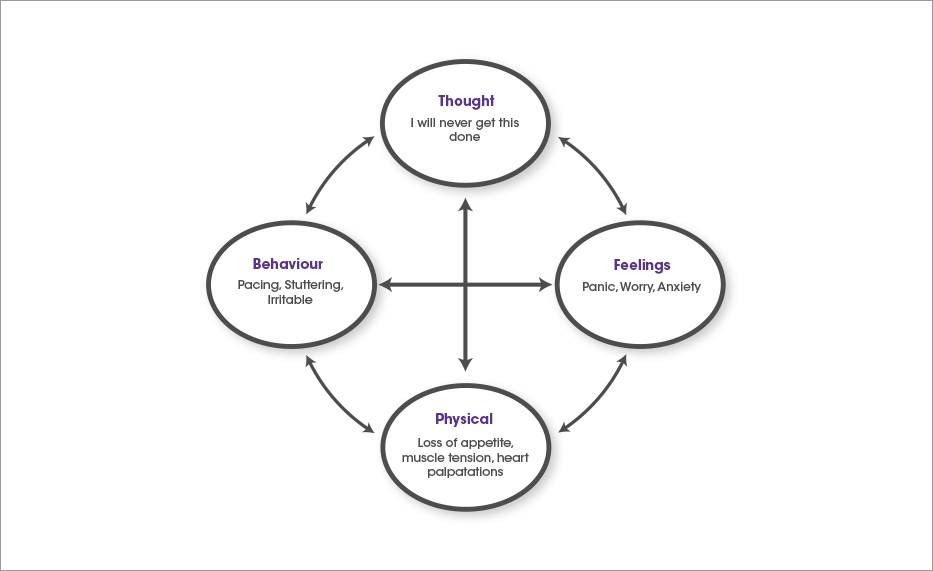What is a Clinical Psychologist?
Clinical psychologists aim to reduce distress and improve the psychological well-being of their clients. They use psychological methods and research to make positive changes to their clients’ lives and offer various forms of treatment.
Clinical Psychologists are trained in being able to draw together lots of different types of information to form ideas as to why a problem has developed and not changed often despite people’s best efforts. They use this information, drawn from different sources, in combination with standardised assessments and research knowledge. This allows the psychologist to get a picture of what is happening and how best to work with you to create effective change.
What happens in Psychological Therapy?
Coming to see me normally takes the format of an initial assessment, followed by treatment and review. The number of sessions needed depends on the difficulties you are experiencing and the goals we agree for therapy. Treatment can only be effective if we work together and as such it is important for us to decide together the best approach. I am able to bring my psychological expertise whilst you have the expertise on your family life, how you work together and the practicalities of your lives.
Initial Assessment
The first appointment is about us getting an understanding of what the difficulties are that your child or you as a family are currently facing. This will mainly happen through us talking together. You may also be asked to fill in some questionnaires which will help me to understand how the difficulties compare to other young people of that age. Depending on the age of your child and how they feel in the session we may also spend a short time together as part of the overall session. The session will last 50 minutes.
As part of the assessment it may also be important to observe your child in the setting(s) that their difficulties appear in and to talk to other people such as teachers or wider family. This will only happen with your agreement. Taking in information from different sources helps to get a thorough understanding of the situation so that the most appropriate treatment plan can be put in place.
Where there are concerns connected to a child’s understanding and abilities it may be important to use more standardised cognitive assessment measures, which would then take further time. Decisions around how to proceed will always be done in a joint manner talking through the different options available and the rationale for them.
Treatment
Following the assessment we will agree together a treatment plan and an initial number of sessions. A standard session is normally 50 minutes but for younger children 30 minutes may be more appropriate. After the agreed sessions we will review together how things are progressing and discuss whether the change has occurred or any further sessions are needed.
Part of the treatment may also involve working with others connected to your child such as teachers, siblings, and wider family as appropriate. These sessions may take place in school, home, or a clinic setting depending on which is most appropriate.
Treatment Approaches
CBT is the evidenced based approach for a number of difficulites, as shown in the NICE guidelines.
I make use of CBT and also other approaches as indicated by the difficulties shown in the assessment.
CBT (Cognitive Behavioural Therapy).
Thoughts are the words we say to ourselves without speaking out loud (self talk). Lots of thoughts go through our head all day. Other people don’t know what we are thinking unless we tell them. People have different thoughts about the same thing. Thoughts and feelings effect each other and our behaviour. CBT is a talking therapy that can help manage problems by changing the way you think and behave. It’s often used to treat anxiety and depression, but can be useful for other mental and physical health problems.

ACT-Acceptance and Commitment Therapy
ACT is about using skills such as mindfulness to be able to stay in the moment and be less swayed by feelings and thoughts of the past and future. It also helps people to think about what is important and meaningful to you-values-and how to use this knowledge to make changes in the direction of what matters to you. This can be particularly helpful with teenagers due to the fast paced and media based society we live in which reinforces a focus on “what’s next” as it helps them to develop skills to counterbalance this.
Mindfulness
“Mindfulness means paying attention in a particular way; on purpose, in the present moment, and non-judgementally” Jon Kabat-Zinn
What this means is that mindfulness is about focusing on the present moment. By doing this you are then less controlled by thoughts and feelings and have more mental freedom (choice about how you respond) which helps us deal with our emotions better. When using mindfulness you are more able to engage fully in what your doing.
Narrative approaches
Narrative approaches seeks to be a respectful and non-blaming approach. It sees people as the experts in their own lives and views problems as separate from people. It assumes people have many skills, beliefs, values that will help them to reduce the influence of problems in their lives. It is about understanding the story that has been created and exploring other narratives around those experiences.
What approach do I follow?
Usually I follow an integrative approach within a CBT framework. That is, I draw from all the approaches mentioned above within a CBT framework. Sometimes, and following NICE (National Institute for Clinical Excellence) guidelines, I only use CBT. However, most people, even when specifically working from a CBT perspective, find alternative techniques such as mindfulness very helpful to focus in the present moment.
